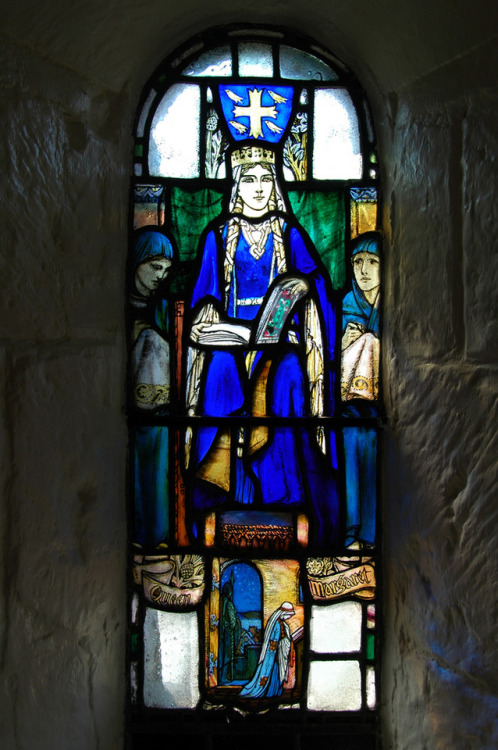scotianostra: On November 16th 1093 St. Margaret of Scotland died. Queen Margaret, as she was know b
scotianostra:On November 16th 1093 St. Margaret of Scotland died.Queen Margaret, as she was know back then, was the wife of Malcolm III, if you remember on Tuesday I wrote about The Battle of Alnwick, where Malcolm and his son Edward, were killed. Already ill and worn from a life full of austerity and fasting, Margaret passed away on hearing of their deaths.Margaret was an English princess born in Hungary to Princess Agatha of Hungary and English Prince Edward the Exile around 1045. Her siblings, Cristina and Edgar the Atheling were also born in Hungary around this time.Margaret’s family fled from William the Conqueror after his victory at the Battle of Hastings in 1066. Her widowed mother set out to take her children north to Northumbria.Tradition says, Agatha decided to leave Northumbria and return to the continent, but her family’s ship got caught in a storm. The storm drove their ship even more north to Scotland, where they were shipwrecked in 1068. The spot they landed on is now known as “St. Margaret’s Hope.”Malcolm Canmore, the king of Scotland, welcomed Margaret and her family and put them under his protection. He soon fell deeply in love with the beautiful and kind princess. Margaret and Malcolm became married in 1070 at the castle of Dunfermline.Together, they had eight children, six sons and two daughters. All of whom were raised with deep Catholic Christian faith. They lived as a holy family, a domestic church.Margaret’s kind-nature and good heart was a strong influence on Malcolm’s reign. She softened his temper and helped him become a virtuous King of Scotland. Together they prayed, fed the hungry, and offered a powerful example of living faith in action. Margaret was placed in charge of all domestic affairs and was often consulted with state matters, as well.She promoted the arts and education in Scotland. She encouraged Church synods and was involved in efforts to correct the religious abuses involving Bishops, priests and laypeople.Her impact in Scotland led her to being referred to as, “The Pearl of Scotland.”She constantly worked to aid the poor Scotland. She encouraged people to live a devout life, grow in prayer, and grow in holiness. She helped to build churches, including the Abbey of Dunfermline. She was well-known for her deep life of prayer and piety. She set aside specific times for prayer and to read Scripture. She didn’t eat often and slept very little so she would have more time for her devotions. She lived holiness of life as a wife, mother and lay woman; truly in love with Jesus Christ.Malcolm supported Margaret in all her endeavors and admired her religious devotion so much he had her books decorated in jewels, gold and silver. One of these decorated books, a gospel book with portraits of the four evangelists, is now kept in Oxford at the Bodleian Library after it was miraculously recovered from a river.Margaret’s body was buried before the high alter at Dunfermline.In 1250, Pope Innocent IV canonized Margaret as a Saint, acknowledging her life of holiness and extraordinary virtue. She was honored for her work for reform of the Church and her personal holiness.In 1259, Margaret’s and Malcolm’s bodies were transferred to a chapel in the eastern apse of Dunfermline Abbey. In 1560, Mary Queen of Scots came into possession of Margaret’s head. It was kept as a relic. She insisted that it, and Margaret’s prayers from heaven, helped assist her in childbirth. Her head later ended up with the Jesuits at the Scots’ College, Douai, France, but was lost during the French Revolution.St. Margaret is the patron saint of Scotland and her feast day is celebrated on November 16. The towns North and South Queensferry are also a tribute to Queen Margaret.Many Schools and Churches are named after St Margaret, including my own Primary School, St Margarets, in Loanhead.The oldest building in Edinburgh, St Margaret’s Chapel in Edinburgh Castle was built around 1130 by her son David I, it was the only building spared during Robert the Bruce’s campaign of taking Scotland, Castle by Castle and destroying them so the English had no hold. The simplicity of the Chapel to me speaks of the simplicity of St Margarets life of piety. -- source link
Tumblr Blog : scotianostra.tumblr.com
#history#11th century#queens


